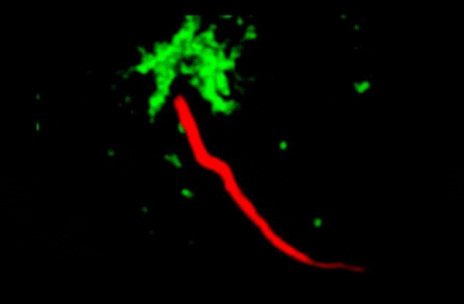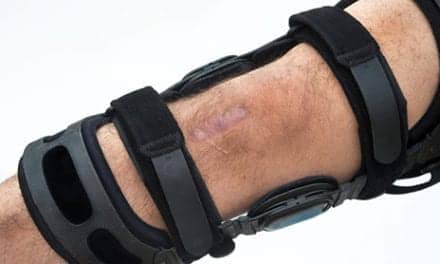
The cilia are the thin hair-like structures only a few 100th of a millimeter long and labeled red in these images. The nucleus of each cell is labeled blue. The green shows an intracellular structure at the base of each cilium called the basal body. The image is made by Super Resolution Microscopy. (Photo courtesy of Queen Mary University of London)
A common drug used to treat bipolar disorder may also be used to help treat osteoarthritis, a new study suggests.
Researchers from Queen Mary University of London (QMUL) suggest that lithium chloride could help treat osteoarthritis by disrupting the length of the cells’ antennae, called primary cilla.
Primary cilla are tiny hair-like structures that protrude from the surface of must human cells. The research team suggests in their study, published recently in The FASEB Journal, that medical manipulation of these antennae disrupts a key biological process called “Hedgehog Signalling,” according to a media release from Queen Mary, University of London.
According to the study, lithium chloride can help increase the size of primary cilia in several cell types.
In their study, the researchers exposed human and bovine cartilage cells to varying doses of lithium chloride over a 24-hour period, and recorded the length of the primary cilia and the activation of Hedgehog Signalling. Using a super resolution imaging technique called structural illumination microscopy (SIM), the researchers observed detailed images of how the drug affects the structure of primary cilia, the release explains.
Martin Knight, BEng, MSc, PhD, the study’s co-author, states in the release that scientists are beginning to realize that primary cilla, which were once thought to be irrelevant, are actually involved in a number of key biological processes.
“Alterations in hedgehog signalling also occur in other conditions so manipulating the structure of primary cilia may have wider therapeutic impact,” says Knight, a professor at Queen Mary University’s School of Engineering and Materials Science and the Institute of Bioengineering.
“This is an exciting new area of medicine known as ciliotherapy, which could transform the treatment of diseases including osteoarthritis, inflammation and cancer,” he adds.
[Source(s): Queen Mary, University of London; EurekAlert]





